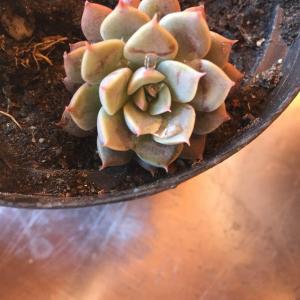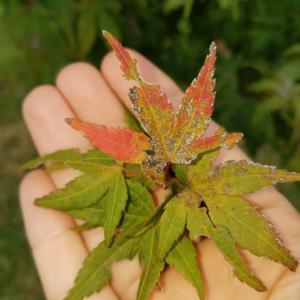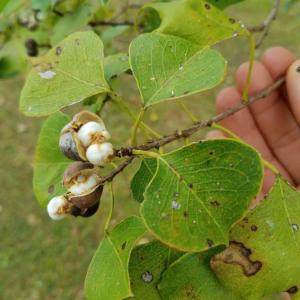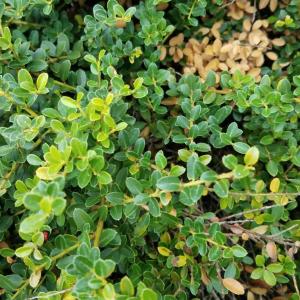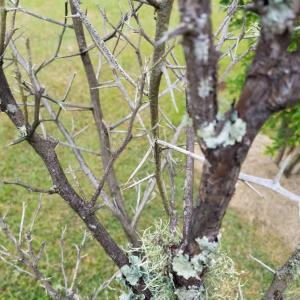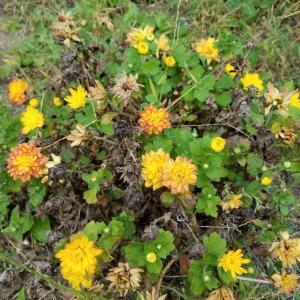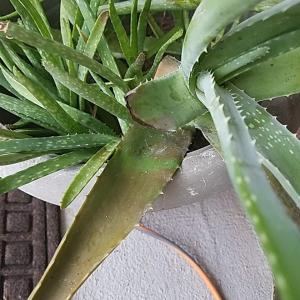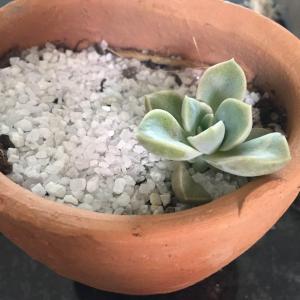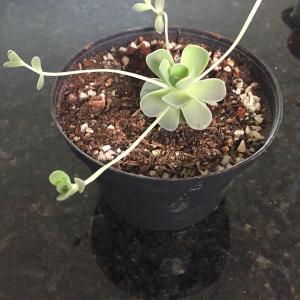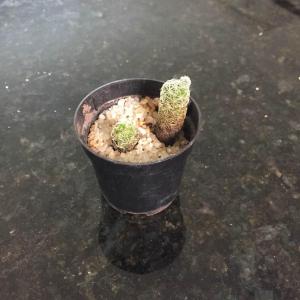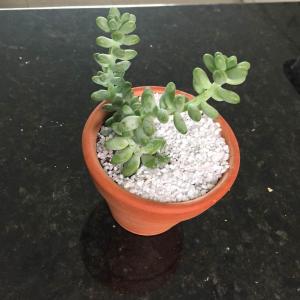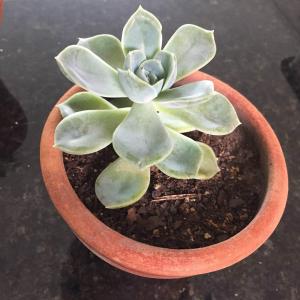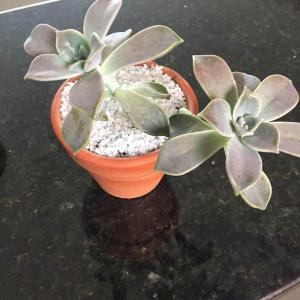求助
Viol
2017年10月31日

I'm not sure what this is called, and the identifier isn't either. Anyone know?#identification


2
1
Lucky Coyote:It looks like my pachyphitum hookeri
Viol:Solved!: x Pachyveria glauca (little jewel)
softwpeach
2017年10月27日

I was watering my plants and I saw this little plant on the ground, so I put it in a little pot but I wanna know what plant it is. #Identification #help
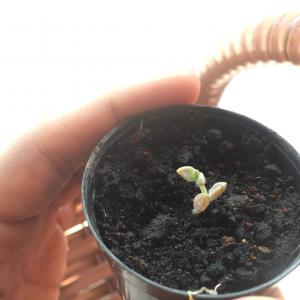

0
0
求助
Annatjie
2017年10月26日

identification please
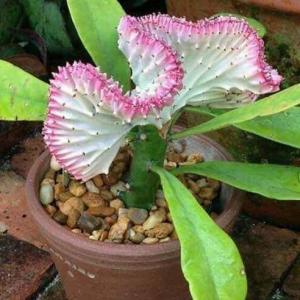

2
1
keira b:all I know is don't touch the white sap if it gets into you it will give you hallucinations. this will of us when it's damaged
pozsga:some kind of Euphorbia lactea
求助
Aurora Warren
2017年10月17日

I would like the identification of all of these
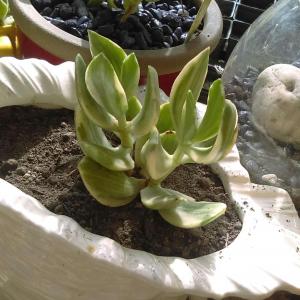

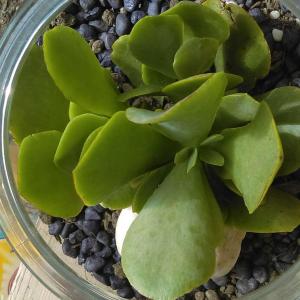







0
0
meriunkat:the second one down might be Variegated Kalanchoe
求助
Ueca
2017年10月14日

Identification? Currently my best guess is Sedeveria "Fanfare".
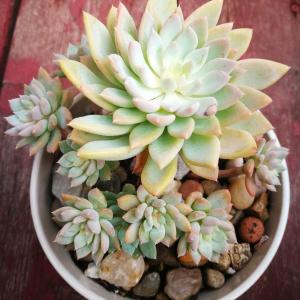

4
1
Infinte Blossom:I believe it is a Echeveria 'Mebina'
Ueca:Hey, no fat shaming!! 😩
lol jkjk 🙂
meriunkat:hmm no the leaves are too chunky to be Sedeveria Fanfare
求助
hege
2017年10月11日

need some help identifying this one #Identification #help #air-plant #epiphytes
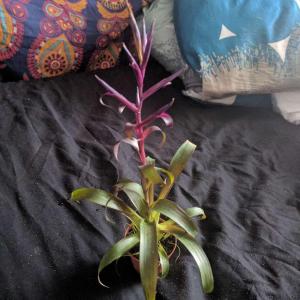
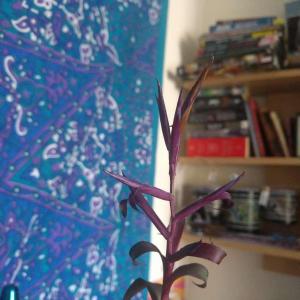


0
0
Infinte Blossom:Purple heart
求助
hege
2017年10月10日

identification help please #Identification #help


0
0
Ueca:Dracaena marginata??? I'm not good with these kinds of plants, to be honest.
求助
Tiffany Tucker
2017年10月07日

Need identification and removal tips
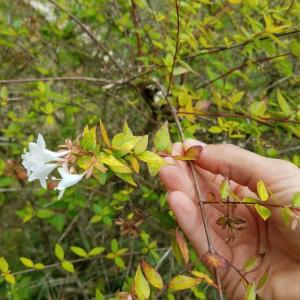
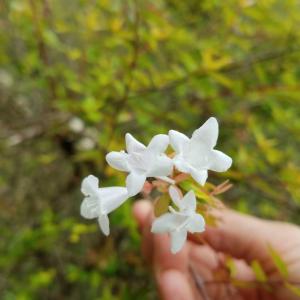
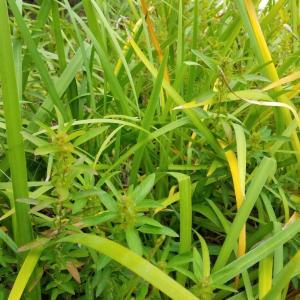

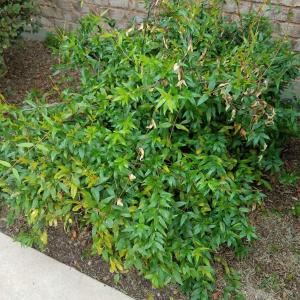
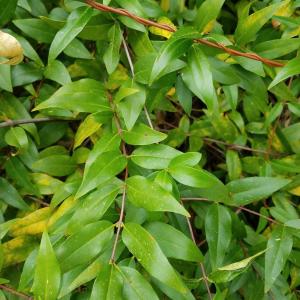












0
0
sunnyzou:1#2#Abelia biflora Turcz.,3#4#Acalypha australis L.,7#8#Magnolia denudata Desr.,9#Gardenia jasminoides
求助
DavidSexton
2017年09月25日

Identification result is in Chinese. How do I translate?


1
0
Ueca:Copy the name down into Google, followed by either "英文名" or "拉丁名", which mean "English name" and "Latin name", respectively.
This plant is called "Aeonium decorum", by the way.
我就静静的看:we will support english soon
文章
Dummer. ゛☀
2017年09月18日

There are approximately 140 North American species of lace bugs. Most have a specific host preference, which aids in identification. Some of the important species of lace bugs are for the azalea - Stephanitis pyrioides, hawthorn - Corythucha cydoniae, lantana - Teleonemia scrupulosa, and hackberry - C. celtidis. Lace bugs also feed on oak, elm, basswood, fringetree, and pyracantha among others.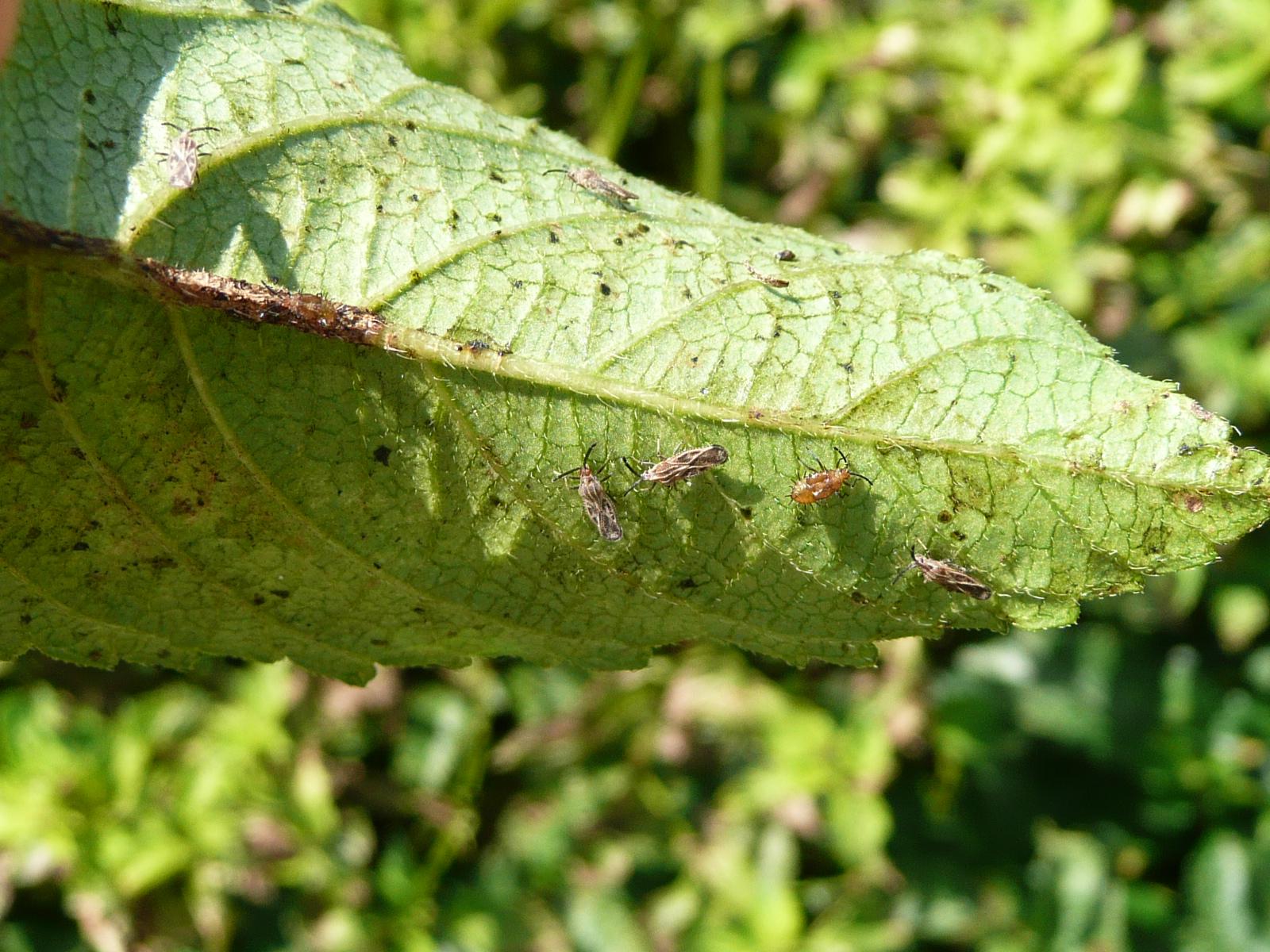
The different species of adults vary from 1/8 to 3/8 inch in length but all have wings and thorax beautifully sculptured with an intricate pattern of veins that resembles lace. The nymphs are dark and are pointed at both ends. Lace bugs, both immature and adults, are most often found on the underside of leaves.
The London plane tree, Platanus acerifolia, is more susceptible to the lace bug than the sycamore, Plantanus occidentalis; both are hosts to the same species of lace bug.
Symptoms and Diagnosis
If heavily infested, the leaves may turn yellow and fall from trees and shrubs. The lace bug feeding mechanism is one that pierces and sucks the plant juices from leaves. This leaves tiny chlorotic flecks on the upper leaf surface. The underside of the leaves will have adults and spiny, dark-colored nymphs. The underside of leaves will look dirty with dark-brown spots and stains. When disturbed, lace bugs exhibit a peculiar bouncing movement.
Life Cycle
Female lace bugs lay groups of eggs on the underside of leaves most often along the midrib. These eggs are partially inserted into the leaf tissue and are pale and almost completely hidden inside the leaf. Many species secrete a brownish substance that hardens over the eggs and secures them to the leaf. Dark spiny nymphs hatch from the eggs and go through 5 to 6 nymphal instars before reaching adulthood. A complete life cycle takes only 30 to 40 days; several generations may occur each year. Lace bugs are more prevalent in late summer and fall. In late summer, both adults and nymphs will be feeding at the same time. Some species overwinter as eggs in the leaf or bark crevices or similar protected areas while other species overwinter in the adult stage.
Integrated Pest Management Strategies
1. Live with the insects but maintain plant vigor. In many cases, the damage occurs late enough in the season or is minor enough not to require action. Keeping plants healthy by watering during periods of drought will limit any damage caused by the insects.
2. Select planting areas carefully. Plant susceptible species away from sidewalks and lawns as dropping leaves, twigs, and lace bug excrement can be bad enough to be considered unpleasant.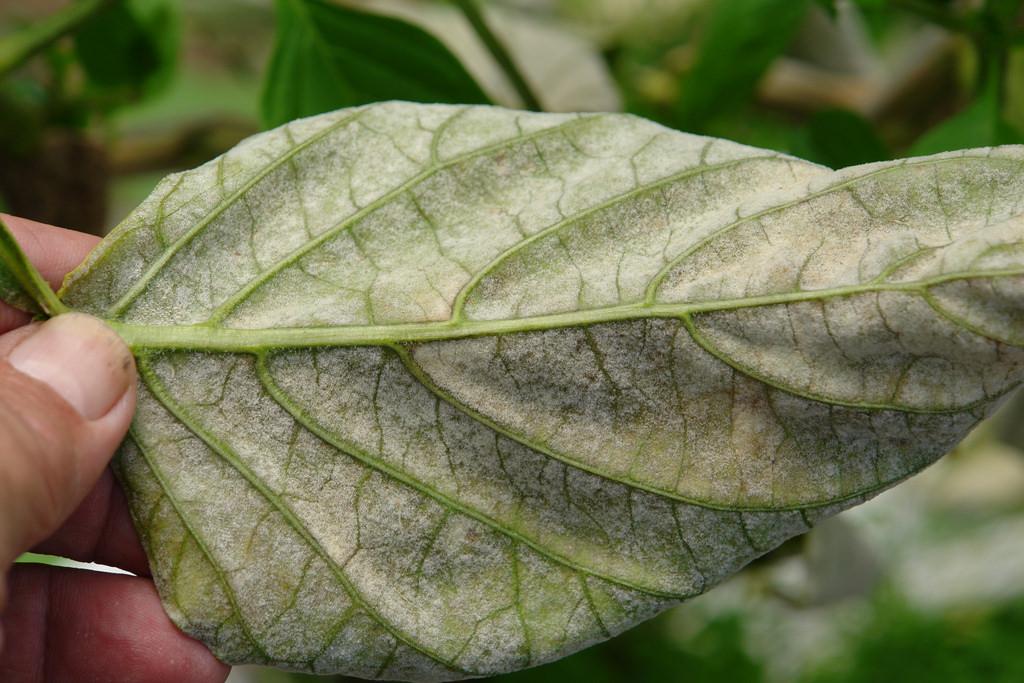
3. Spray with water. Nymphs can be dislodged by forceful sprays of water and are vulnerable to control by contact with insecticidal soaps.
4. Sanitation. Prompt removal of leaves and twigs under plants can remove overwintering pests and limit the chances of reinfestation.
5. Control. Natural enemies are usually effective in maintaining populations at a low level and bringing outbreaks under control. Chemical controls are usually only used on shade and ornamental trees. Control of the azalea lace bug on evergreen azaleas is often required as the loss of leaves on these plants can have a more serious impact on plant health.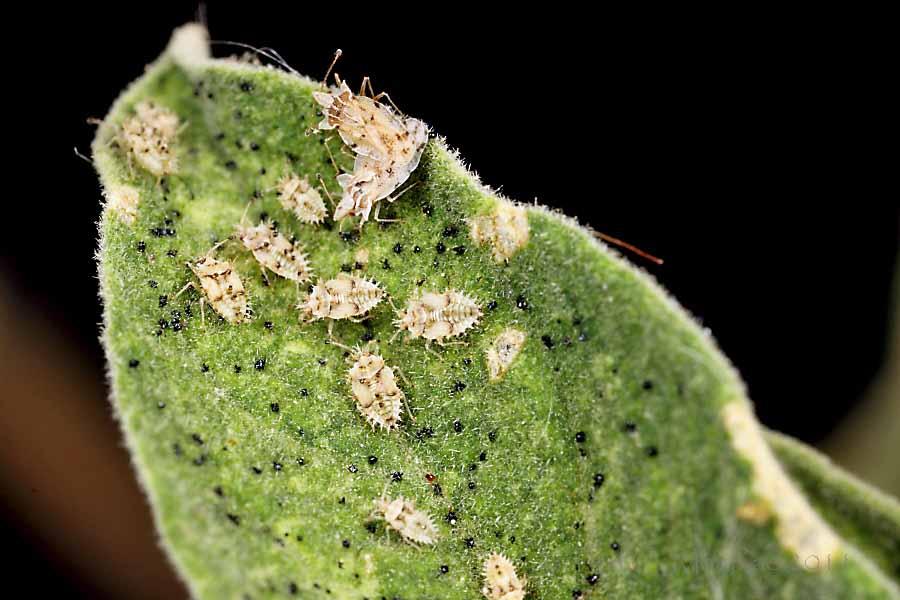
6. Use insecticides. Pesticides registered for use include acephate (Orthene), bendiocarb (Turcam, Closure), capsaicin, carbaryl (Sevin), disulfoton (Di-syston), malathion, permethrin, pyrethrins, and horticultural oils. Spray as soon as eggs hatch on leaves in early spring. Some control is possible with a dormant spray applied just before growth in spring.

The different species of adults vary from 1/8 to 3/8 inch in length but all have wings and thorax beautifully sculptured with an intricate pattern of veins that resembles lace. The nymphs are dark and are pointed at both ends. Lace bugs, both immature and adults, are most often found on the underside of leaves.
The London plane tree, Platanus acerifolia, is more susceptible to the lace bug than the sycamore, Plantanus occidentalis; both are hosts to the same species of lace bug.

Symptoms and Diagnosis
If heavily infested, the leaves may turn yellow and fall from trees and shrubs. The lace bug feeding mechanism is one that pierces and sucks the plant juices from leaves. This leaves tiny chlorotic flecks on the upper leaf surface. The underside of the leaves will have adults and spiny, dark-colored nymphs. The underside of leaves will look dirty with dark-brown spots and stains. When disturbed, lace bugs exhibit a peculiar bouncing movement.
Life Cycle
Female lace bugs lay groups of eggs on the underside of leaves most often along the midrib. These eggs are partially inserted into the leaf tissue and are pale and almost completely hidden inside the leaf. Many species secrete a brownish substance that hardens over the eggs and secures them to the leaf. Dark spiny nymphs hatch from the eggs and go through 5 to 6 nymphal instars before reaching adulthood. A complete life cycle takes only 30 to 40 days; several generations may occur each year. Lace bugs are more prevalent in late summer and fall. In late summer, both adults and nymphs will be feeding at the same time. Some species overwinter as eggs in the leaf or bark crevices or similar protected areas while other species overwinter in the adult stage.

Integrated Pest Management Strategies
1. Live with the insects but maintain plant vigor. In many cases, the damage occurs late enough in the season or is minor enough not to require action. Keeping plants healthy by watering during periods of drought will limit any damage caused by the insects.
2. Select planting areas carefully. Plant susceptible species away from sidewalks and lawns as dropping leaves, twigs, and lace bug excrement can be bad enough to be considered unpleasant.

3. Spray with water. Nymphs can be dislodged by forceful sprays of water and are vulnerable to control by contact with insecticidal soaps.
4. Sanitation. Prompt removal of leaves and twigs under plants can remove overwintering pests and limit the chances of reinfestation.
5. Control. Natural enemies are usually effective in maintaining populations at a low level and bringing outbreaks under control. Chemical controls are usually only used on shade and ornamental trees. Control of the azalea lace bug on evergreen azaleas is often required as the loss of leaves on these plants can have a more serious impact on plant health.

6. Use insecticides. Pesticides registered for use include acephate (Orthene), bendiocarb (Turcam, Closure), capsaicin, carbaryl (Sevin), disulfoton (Di-syston), malathion, permethrin, pyrethrins, and horticultural oils. Spray as soon as eggs hatch on leaves in early spring. Some control is possible with a dormant spray applied just before growth in spring.
0
0




